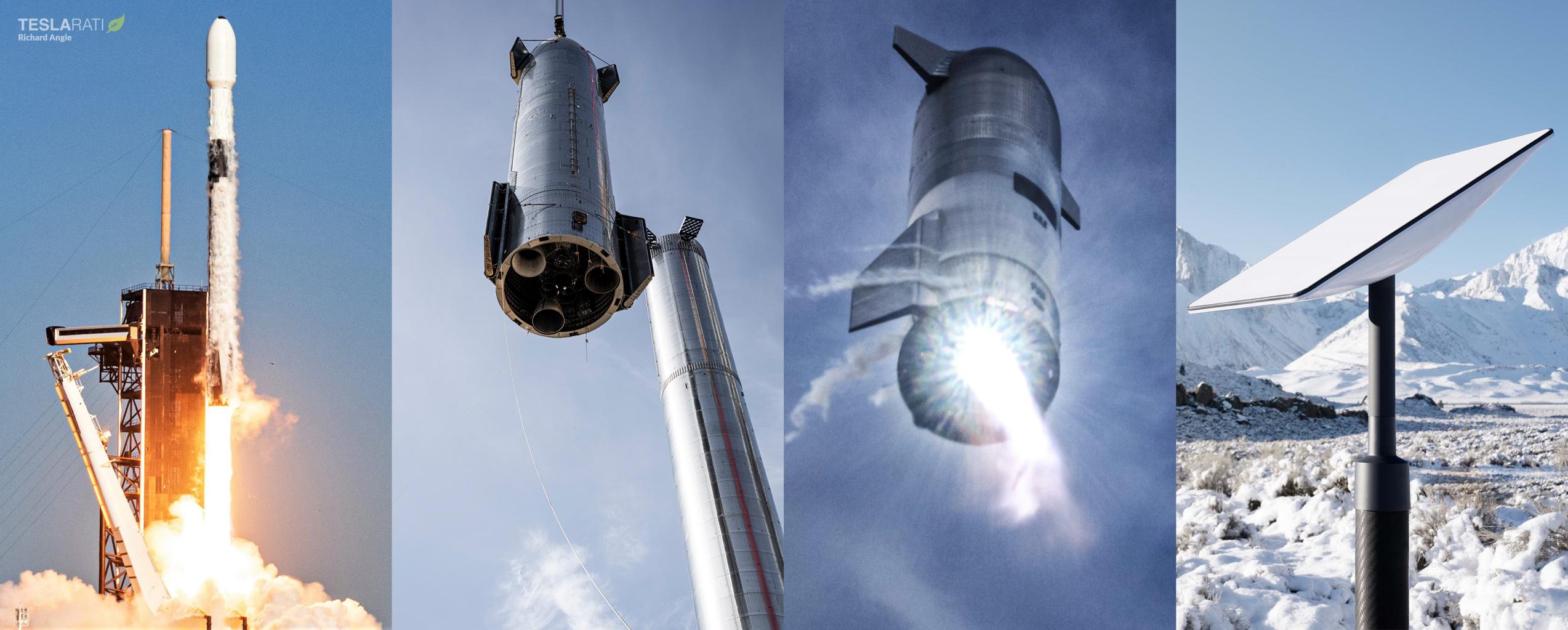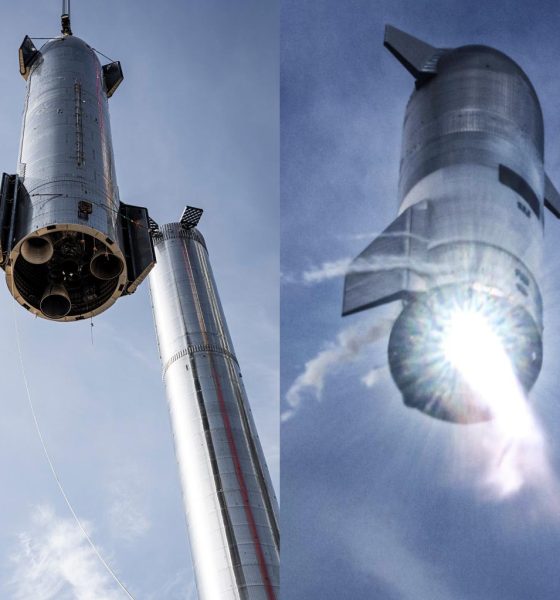

News
SpaceX closes out 2021 with $1.85 billion in new funding
On the eve of the last day of 2021, SEC filings show that SpaceX has secured another $337 million, bringing the total funding the company has raised this year to approximately $1.85 billion.
While there’s evidence that SpaceX’s Falcon and Dragon launch business is easily profitable on its own, the company has been simultaneously developing a next-generation rocket (Starship) and an unprecedentedly ambitious internet satellite constellation (Starlink) for at least the last 5-6 years. Additionally, SpaceX developed Falcon booster reusability and Falcon Heavy entirely on its own at a total cost of at least $1-2 billion. In short, rocket development is incredibly expensive, and adding a far more ambitious rocket and an immense satellite constellation into the mix has created an insatiable demand for fresh capital.
Investors have been more than eager to satisfy that demand, practically chomping at the bit to buy SpaceX equity or debt over the last six years. Since 2015, SpaceX has raised an average of more than $1B per year for the last seven years.


That funding has accomplished a great deal. As of the end of 2021, SpaceX has built and launched 1869 operational Starlink satellites in 25 months, more than 1750 of which are still in orbit and working. SpaceX has also built hundreds of thousands of ‘user terminals’ – dishes and WiFi routers that currently connect more than 150,000 subscribers to the internet even while the service remains in beta.
Starship, while somewhat behind its CEO’s optimistic schedules, continues to march towards its first spaceflight and orbital-velocity launch attempt – possibly in the first half of 2022. With help from its Hawthorne, CA headquarters, SpaceX’s Starbase factory continues to churn out Starship, Super Heavy booster, and test tank prototypes and appears to be ramping back up after six or so months of relative quiet. Having produced approximately 150 Raptor 1 and Raptor 1.5 engines in the last two years, Hawthorne is now focused on ramping up production of Raptor 2 – an upgraded engine variant capable of producing up to 25% more thrust while, in theory, being far cheaper to produce.
In about 12 months, SpaceX has also built – from nothing – an orbital launch site on the verge of being ready to support the first test flights of the largest, heaviest, and most powerful rocket ever built. To accommodate the massive vehicle, SpaceX has also nearly completed the largest cryogenic tank farm ever built for a launch site and partially filled at least four or five of its seven cryogenic storage tanks. Alongside that tank farm, the company has more or less completed a skyscraper-sized launch tower and outfitted it with three giant, moving arms – two of which are designed to stack Starship on Super Heavy and, maybe one day, catch ships and boosters out of mid-air.
According to a company-wide email CEO Elon Musk recently wrote but subsequently downplayed on Twitter, SpaceX’s financial health could be heavily dependent on the successful start and expansion of Raptor 2 production to enable Starship to begin launching new and much-improved Starlink V2.0 satellites. Those satellites are several times larger than V1.0 or V1.5 spacecraft, apparently making it hard or impossible for Falcon 9 to cost-effectively launch them.
On top of building and activating new factories capable of producing millions of Starlink user terminals per year, completing the first phase of orbital Starship development, ramping up Raptor 2 production, starting to build a fleet of operational Starships and Super Heavy boosters, continuing Falcon 9 Starlink V1.5 launches, and simultaneously building or completing no less than three orbital Starship launch sites in Florida and Texas, SpaceX thus also apparently needs to complete Starlink V2.0 satellite development and effectively build one or several entirely new production lines to start producing the substantially different spacecraft.
A large portion of SpaceX’s 2021 funding – especially the ~$337M raised in the last two weeks – will likely help support a portion of all those development efforts next year.

Elon Musk
Elon Musk and Tesla AI Director share insights after empty driver seat Robotaxi rides
The executives’ unoccupied tests hint at the rapid progress of Tesla’s unsupervised Robotaxi efforts.

Tesla CEO Elon Musk and AI Director Ashok Elluswamy celebrated Christmas Eve by sharing personal experiences with Robotaxi vehicles that had no safety monitor or occupant in the driver’s seat. Musk described the system’s “perfect driving” around Austin, while Elluswamy posted video from the back seat, calling it “an amazing experience.”
The executives’ unoccupied tests hint at the rapid progress of Tesla’s unsupervised Robotaxi efforts.
Elon and Ashok’s firsthand Robotaxi insights
Prior to Musk and the Tesla AI Director’s posts, sightings of unmanned Teslas navigating public roads were widely shared on social media. One such vehicle was spotted in Austin, Texas, which Elon Musk acknowleged by stating that “Testing is underway with no occupants in the car.”
Based on his Christmas Eve post, Musk seemed to have tested an unmanned Tesla himself. “A Tesla with no safety monitor in the car and me sitting in the passenger seat took me all around Austin on Sunday with perfect driving,” Musk wrote in his post.
Elluswamy responded with a 2-minute video showing himself in the rear of an unmanned Tesla. The video featured the vehicle’s empty front seats, as well as its smooth handling through real-world traffic. He captioned his video with the words, “It’s an amazing experience!”
Towards Unsupervised operations
During an xAI Hackathon earlier this month, Elon Musk mentioned that Tesla owed be removing Safety Monitors from its Robotaxis in Austin in just three weeks. “Unsupervised is pretty much solved at this point. So there will be Tesla Robotaxis operating in Austin with no one in them. Not even anyone in the passenger seat in about three weeks,” he said. Musk echoed similar estimates at the 2025 Annual Shareholder Meeting and the Q3 2025 earnings call.
Considering the insights that were posted Musk and Elluswamy, it does appear that Tesla is working hard towards operating its Robotaxis with no safety monitors. This is quite impressive considering that the service was launched just earlier this year.
Elon Musk
Starlink passes 9 million active customers just weeks after hitting 8 million
The milestone highlights the accelerating growth of Starlink, which has now been adding over 20,000 new users per day.

SpaceX’s Starlink satellite internet service has continued its rapid global expansion, surpassing 9 million active customers just weeks after crossing the 8 million mark.
The milestone highlights the accelerating growth of Starlink, which has now been adding over 20,000 new users per day.
9 million customers
In a post on X, SpaceX stated that Starlink now serves over 9 million active users across 155 countries, territories, and markets. The company reached 8 million customers in early November, meaning it added roughly 1 million subscribers in under seven weeks, or about 21,275 new users on average per day.
“Starlink is connecting more than 9M active customers with high-speed internet across 155 countries, territories, and many other markets,” Starlink wrote in a post on its official X account. SpaceX President Gwynne Shotwell also celebrated the milestone on X. “A huge thank you to all of our customers and congrats to the Starlink team for such an incredible product,” she wrote.
That growth rate reflects both rising demand for broadband in underserved regions and Starlink’s expanding satellite constellation, which now includes more than 9,000 low-Earth-orbit satellites designed to deliver high-speed, low-latency internet worldwide.
Starlink’s momentum
Starlink’s momentum has been building up. SpaceX reported 4.6 million Starlink customers in December 2024, followed by 7 million by August 2025, and 8 million customers in November. Independent data also suggests Starlink usage is rising sharply, with Cloudflare reporting that global web traffic from Starlink users more than doubled in 2025, as noted in an Insider report.
Starlink’s momentum is increasingly tied to SpaceX’s broader financial outlook. Elon Musk has said the satellite network is “by far” the company’s largest revenue driver, and reports suggest SpaceX may be positioning itself for an initial public offering as soon as next year, with valuations estimated as high as $1.5 trillion. Musk has also suggested in the past that Starlink could have its own IPO in the future.
News
NVIDIA Director of Robotics: Tesla FSD v14 is the first AI to pass the “Physical Turing Test”
After testing FSD v14, Fan stated that his experience with FSD felt magical at first, but it soon started to feel like a routine.

NVIDIA Director of Robotics Jim Fan has praised Tesla’s Full Self-Driving (Supervised) v14 as the first AI to pass what he described as a “Physical Turing Test.”
After testing FSD v14, Fan stated that his experience with FSD felt magical at first, but it soon started to feel like a routine. And just like smartphones today, removing it now would “actively hurt.”
Jim Fan’s hands-on FSD v14 impressions
Fan, a leading researcher in embodied AI who is currently solving Physical AI at NVIDIA and spearheading the company’s Project GR00T initiative, noted that he actually was late to the Tesla game. He was, however, one of the first to try out FSD v14.
“I was very late to own a Tesla but among the earliest to try out FSD v14. It’s perhaps the first time I experience an AI that passes the Physical Turing Test: after a long day at work, you press a button, lay back, and couldn’t tell if a neural net or a human drove you home,” Fan wrote in a post on X.
Fan added: “Despite knowing exactly how robot learning works, I still find it magical watching the steering wheel turn by itself. First it feels surreal, next it becomes routine. Then, like the smartphone, taking it away actively hurts. This is how humanity gets rewired and glued to god-like technologies.”
The Physical Turing Test
The original Turing Test was conceived by Alan Turing in 1950, and it was aimed at determining if a machine could exhibit behavior that is equivalent to or indistinguishable from a human. By focusing on text-based conversations, the original Turing Test set a high bar for natural language processing and machine learning.
This test has been passed by today’s large language models. However, the capability to converse in a humanlike manner is a completely different challenge from performing real-world problem-solving or physical interactions. Thus, Fan introduced the Physical Turing Test, which challenges AI systems to demonstrate intelligence through physical actions.
Based on Fan’s comments, Tesla has demonstrated these intelligent physical actions with FSD v14. Elon Musk agreed with the NVIDIA executive, stating in a post on X that with FSD v14, “you can sense the sentience maturing.” Musk also praised Tesla AI, calling it the best “real-world AI” today.








